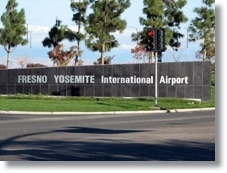Fire Fighting & Temporary Flight Restrictions (TFRs)
By Andy Wilson |
With hot weather comes an increase in wild fires and associated aerial fire fighting activity. Temporary Flight Restrictions are normally put in place around a fire to protect this aerial activity. To see a list of current TFRs and a map of their location go to http://tfr.faa.gov/tfr2/list.html or go to www.faa.gov and click on the…
Clay Lacy Inducted into the National Aviation Hall of Fame
By Andy Wilson |
California pilot Clay Lacy will be inducted into the National Aviation Hall of Fame in Dayton, Ohio, on July 17. “Clay was [in early] on corporate jet aviation and helped make Lear a household name and opened up that sector of the aviation industry,” said Ron Kaplan, enshrinement director at the Hall of Fame. Lacy…
New FAA Safety Briefing Weather Issue
By Andy Wilson |
The July/August 2010 issue of FAA Safety Briefing focuses on aviation weather and its critical effect on safe general aviation (GA) flying. Articles address obtaining and interpreting weather data, developing strategies for avoiding marginal or hazardous weather, and what services air traffic control can and cannot provide in adverse conditions. The link to the online…
TFR Los Angleles, CA. July 8th
By Andy Wilson |
VIP NOTAM – Los Angeles, CA. Notice Number: NOTC2398 July 08-09, 2010 Los Angeles 3 NMR SFC-2,999 AGL Specific instructions and restrictions are available at http://tfr.faa.gov. *Depicted TFR data may not be a complete listing. Pilots should not use the information on this website for flight planning purposes. For the latest information, call your local…
California Energy Commission Mariposa Energy Project (MEP) Workshop
By Andy Wilson |
The California Energy Commission staff will conduct a workshop (6/30/10 1:15 PM) for the proposed Mariposa Energy Project (MEP) to discuss the clarification of the applicant’s data responses, work towards resolving outstanding issues and discuss project scheduling. All interested agencies and members of the public are invited to participate.
Camping with Your Plane
By Andy Wilson |
The American Air Campers Association is the result of a life-long dream of forming an organization dedicated exclusively to pilots and families with a passion for flying and camping.
FAA Seeks Input on Long Beach Class C Proposal
By Andy Wilson |
Southern California contains some of the trickiest airspace in the United States, but the FAA is considering making it a little more complex. The agency is proposing to change Long Beach/Daugherty Field’s Class D airspace to Class C.
Tahoe Seaplane Splash-in – TRPA Board meeting on June 23
By Andy Wilson |
The threat to the future of seaplanes on Lake Tahoe is not fully gone yet. The TRPA Board meeting on June 23 will be the determining vote on the issue. Following that vote, assuming we prevail, we will, through the SPA Water Flying Directory, publicize the existing limitations as they apply to all boats (no wake zones, no more than 5 mph in Emerald Bay, no power boats in marked swimming zones) and encouraged continued best practices for both noise and invasive species threats to Lake Tahoe.
Big-Engine Type Groups Unite On Fuel Issue
By Andy Wilson |
Type groups representing owners of high-performance piston aircraft have formed the Green 100 Octane Coalition to raise awareness of issues surrounding the impending demise of 100LL. So far, members include the American Bonanza Society, the Malibu Mirage Owners and Pilots Association, the Cirrus Owners and Pilots Association and some individuals.
Fresno Airport Receives Top Aviation Award
By Andy Wilson |
 Fresno Yosemite International Airport (FAT) was recognized for its safe flying image with the Outstanding Western-Pacific Airport award given by the Federal Aviation Administration (FAA).
Fresno Yosemite International Airport (FAT) was recognized for its safe flying image with the Outstanding Western-Pacific Airport award given by the Federal Aviation Administration (FAA).

